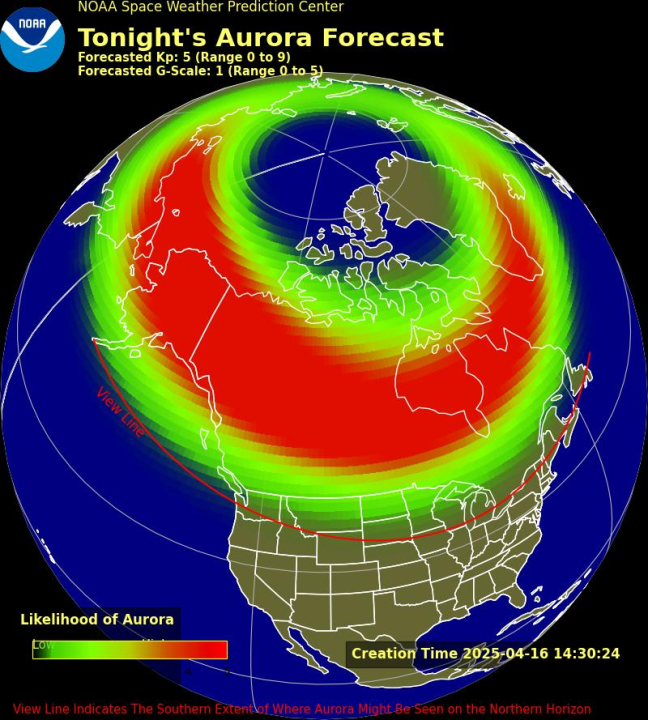(NEXSTAR) — Parts of the U.S. may get the chance to see the northern lights for a second night in a row on Wednesday — as long as the conditions are right.
Since Sunday, NOAA’s Space Weather Prediction Center had been tracking coronal mass ejections, or CMEs, hurled out by the sun. On Tuesday, the SWPC said a shock associated with one or both CMEs it detected had arrived.
That helped spur a forecast giving several northern states a chance at seeing the aurora Tuesday night.
The associated geomagnetic activity also prompted an infrequent but not uncommon G3 geomagnetic storm watch for Wednesday. As of 10:30 a.m. ET, the SWPC is showing Kp indexes — used to measure the strength of geomagnetic activity — in G3 range.
While that’s usually good if you’re hoping to see the northern lights, the timing is less than great, since the sun will block out our aurora viewing. You may, however, still have a chance to see the northern lights Wednesday night.
The SWPC is forecasting an increase in geomagnetic activity starting around 9 p.m. UTC, or 4 p.m. ET. The heightened activity could carry on for several hours, the forecast shows, giving you a chance to see the northern lights.
Below is the northern lights viewing forecast for Wednesday. It shows that Alaska and Canada will have the greatest likelihood of seeing the aurora, but some in the northern portions of the Lower 48 may catch a glimpse of the celestial show on the northern horizon.
That includes all or part of Washington, Idaho, Montana, Wyoming, North Dakota, South Dakota, Minnesota, Iowa, Wisconsin, Michigan, New York, Vermont, New Hampshire, and Maine. There’s also a small chance that those living in the northern reaches of Oregon, Nebraska, and Illinois could see the show.

Geomagnetic storm conditions are expected to weaken through Thursday.
Forecasting space weather can be complicated, and predictions could change as the day goes on. You can follow the SWPC’s forecasting online.
When the geomagnetic storm conditions are weaker, and the aurora-spotting likelihood lower, experts recommend looking at the northern horizon to get a glimpse of the celestial show. You may have to use your smartphone to see it, since those devices are more sensitive than our eyes.
Later this month, another celestial event will arrive in the sky: a rare “smiley face,” if you will. You’ll have only a narrow window of time to see it, however.



